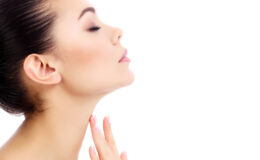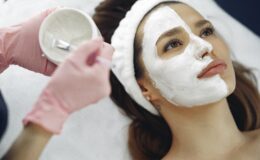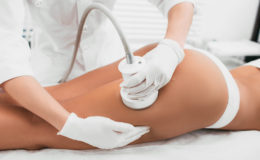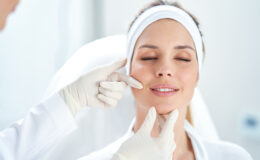Acne-prone, dull skin can wreak havoc on your self-confidence and make it difficult to feel comfortable in your skin. Many treatments target stubborn and persistent breakouts, but which one meets your needs? Natural remedies or professional care?
Throughout this post, we will talk about different skin types and dive into the differences between natural facial treatments and seeking professional help from a dermatologist or spa so you can decide which option is best for treating your skin concerns.
Different Skin Types
When it comes to skincare, what works for one person may not work for another. That is why you should understand various skin types and how to care for each appropriately. From combination skin to dry skin, here is everything you need to know about different skin types.
Combination Skin
Combination skin is characterized by oily areas along the forehead, chin, and nose, while other parts of your face, such as cheeks and around the eyes, tend to be dry. This means you have to customize your skincare routine depending on which area needs more attention or oil control. Fortunately, this modern age has several solutions and even specific cosmetics tailored to their unique needs.
Dry Skin
Taking care of dry skin is essential to keep it looking and feeling healthy. Signs of dry skin include tightness, roughness, cracking, and peeling. Also, pores tend to be smaller than usual, which can cause your skin to feel tight after washing.
Dry skin can be caused by a lack of oil, making it more prone to dehydration. This can make it difficult for your body to naturally exfoliate dead skin cells your complexion look dull.
To address this, consider getting a facial that includes a gentle exfoliator and deep-penetrating mask, which will help restore some of the lost moisture in your skin.
Oily Skin
People with oily skin often experience excess oil on their faces and develop large pores that can easily become clogged. The accumulation of oil, skin cells, makeup, environmental pollutants, and other substances can cause blackheads, whiteheads, and cystic acne. Washing the face usually only provides temporary relief before the oil comes back.
To get back to a more balanced state and take better care of the skin, facials for oily skin are beneficial. A facial containing an exfoliant such as salicylic or glycolic acid will help remove buildup in your pores while also improving the overall health of your skin.
Sensitive Skin
Those with sensitive skin know the daily struggle that comes with it: redness, irritation, itching, and more. Washing your face is essential but can make existing issues worse. Therefore, choose facial cleansers and moisturizers free from fragrances or harsh chemicals to soothe your troubled complexion.
Contrary to popular belief, having sensitive skin does not mean resigning yourself to only accepting basic care. But a well-thought-out routine will keep discomfort at bay while working toward clear and glowing skin.
Searching for an experienced aesthetician who understands this delicate matter is key to ensuring a successful facial treatment for sensitive skin.
Normal Skin
Normal skin is the envy of many. It is usually balanced, with proper pH and pores that are not too big or too small. Keeping your skin healthy requires regular washing to remove dirt and oil buildup, but other than that, it requires no special care.
When getting facial treatments, people with normal skin can go for whatever feels or works best for them.
 Which Skin Type Is Prone to Acne?
Which Skin Type Is Prone to Acne?
Acne can lower one’s confidence and self-esteem, but understanding which skin type is more prone to it can help you know what to look out for and how to prevent it.
Unfortunately, those with oily skin are more likely to struggle with regular breakouts due to their overproduction of sebum, aka oil. This can make regulating the amount of oil on the face challenging and cause clogged pores that eventually lead to acne.
Natural Facial Treatments
Plenty of natural remedies have been used for generations to help clear and nourish the skin. That being said, here are some home recipes and natural ingredients commonly found in skincare products designed to address acne-prone complexions:
Apple Cider Vinegar
If you are looking for a natural cleanser to reduce inflammation and bacteria on your skin, try using apple cider vinegar as a toner. Apple cider vinegar helps fight bacteria while also balancing the pH level of your skin, which helps reduce the redness and swelling associated with acne breakouts.
All you need is one part apple cider vinegar mixed with two parts water. Apply it directly to your face twice daily with a cotton ball or pad.
Honey Mask
Honey has antibacterial properties that make it great for helping fight acne.
To make this face mask, mix 1/2 cup of honey with 1/4 cup of oatmeal until you get a paste-like consistency. After that, apply the mask to your face and sit for 15 minutes, then rinse off with warm water. Not only does this face mask help reduce inflammation caused by acne, but its gentle exfoliating action will leave your skin feeling soft and smooth afterward.
Tea Tree Oil
Tea tree oil is known for having antiseptic properties, which makes it great for fighting bacteria that cause acne breakouts. You can find tea tree oil in liquid or cream form in most drug stores or health food stores.
Simply apply a small amount of the oil or cream directly onto the affected area twice daily after cleansing with warm water, soap, or an appropriate cleanser for your skin type.
Tea tree oil is highly effective at treating mild to moderate acne blemishes while also reducing redness and swelling associated with breakouts. Every person’s skin is unique. If you experience itching or irritation after doing these natural skin remedies, stop the regimen and seek professional advice.
Professional Spa Treatments for Acne
If you have acne-prone skin, you understand the frustration of trying to get it under control. You have probably tried all kinds of products and treatments but have yet to find a solution that works. Fortunately, many esthetician acne treatments are specifically designed to target acne and help reduce breakouts.
Here are three of the best facials for clogged pores:
#1: LED Facial For Acne-Prone and Sensitive Skin
LED facials are an exciting way to promote healthy skin while avoiding harsh chemicals. The combination of white, red, and blue infrared light target collagen, bacteria, and tone in the skin. They are especially beneficial for sensitive skin because the lights target the problem without harsh side effects.
LED facial therapy helps combat acne due to its antibacterial effects and ability to soothe inflammation.
#3: Decongesting Facial For Skin Prone to Breakouts
Decongesting facials efficiently remove dirt, oil, and acne-causing bacteria from blocked pores, so skin feels balanced and hydrated.
In addition, the resurfacing creates a smoother skin texture that makes the skin appear brighter and more vibrant. Resurfacing removes the top layer of skin and allows new cells to come through that are healthy and strong.
With the help of this acne-clearing facial, your skin will look and feel healthier in no time.
Natural Remedies Vs. Professional Care: Which One Is Better?
When treating acne-prone skin, natural facial treatments and professional spa treatments have benefits and drawbacks. It is up to you (and your dermatologist) to decide which is best for you.
Natural facial treatments are generally less expensive than professional spa treatments. But they provide less relief from acne symptoms than more intensive services offered by professionals, such as microdermabrasion or LED facials. Also, natural treatments have the advantage of being gentler on the skin than chemical peels. However, they also take longer to produce visible results since they don’t penetrate the deeper layers of the skin like professional treatments do.
With acne-prone treatments, the final decision will depend on the results you are looking for and the budget you have.

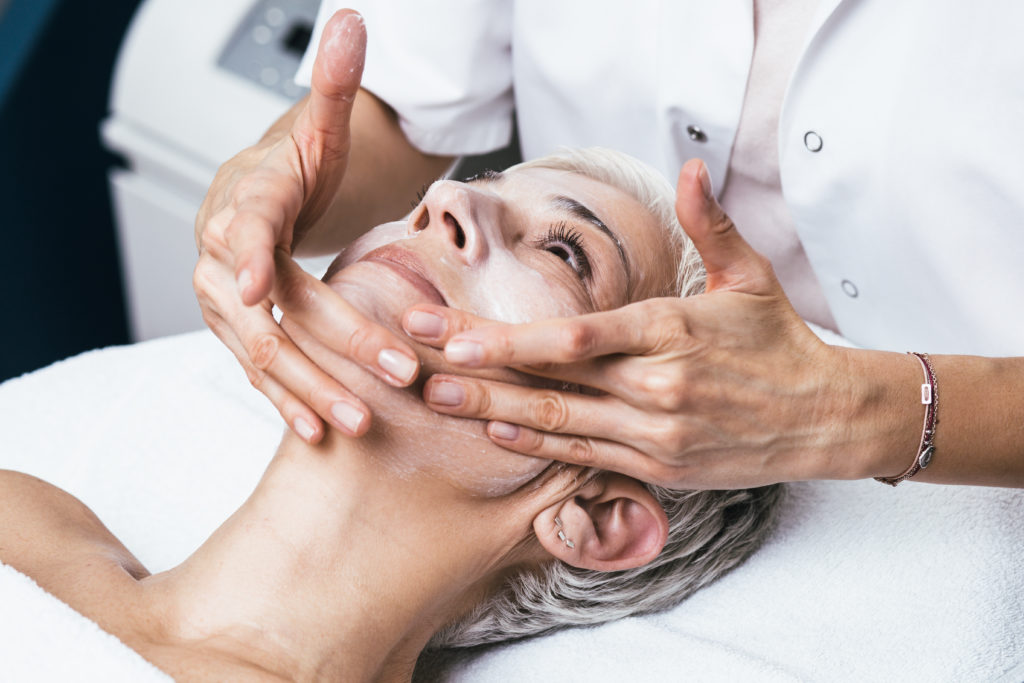 Which Skin Type Is Prone to Acne?
Which Skin Type Is Prone to Acne?